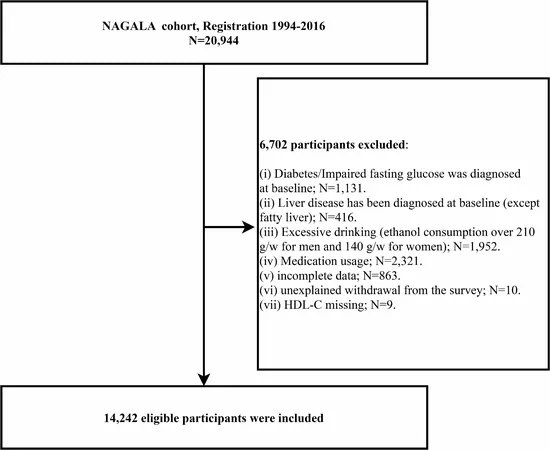
Breakthrough in Sarcoma Treatment: Pembrolizumab Significantly Improves Disease-Free Survival
2025-01-02
Author: Li
Breakthrough in Sarcoma Treatment: Pembrolizumab Significantly Improves Disease-Free Survival
In a groundbreaking development for sarcoma patients, the combination of pembrolizumab (Keytruda) with preoperative radiotherapy and surgery has demonstrated a remarkable enhancement in disease-free survival (DFS) for individuals suffering from stage III undifferentiated pleomorphic sarcoma or dedifferentiated liposarcoma of the extremity. These promising results were published in a recent study from the phase 2 SU2C-SARC032 trial in The Lancet.
The findings indicate a significant 2-year survival benefit for the group receiving pembrolizumab, with an estimated DFS rate of 67% (90% confidence interval, 58%-78%). This contrasts sharply with a 52% DFS rate (90% CI, 42%-62%) observed in the placebo group. The analysis yielded a hazard ratio of 0.61, signifying a favorable outcome for patients treated with the experimental therapy.
Dr. David G. Kirsch, a senior scientist at the Princess Margaret Cancer Centre and co-lead author of the study, emphasized the trial's pioneering nature. "This is the first randomized trial to investigate the addition of immune checkpoint blockade to radiation therapy and surgery for high-risk localized soft tissue sarcoma of the extremity," Dr. Kirsch stated. The study showcased a clinically significant improvement in DFS, marking a potential paradigm shift in treating this aggressive cancer.
The SU2C-SARC032 trial involved 143 patients, who were randomly divided into two groups: one receiving pembrolizumab alongside radiation therapy and surgery (71 patients), and the other receiving a placebo under the same conditions (72 patients). Out of these, 127 completed radiotherapy and were included in the DFS analysis, with a careful consideration of histology and patient demographics across both groups.
Notably, both groups had a similar demographic makeup. For instance, approximately 62% of patients in the control group and 64% in the experimental group were male. The median ages were nearly identical as well, with the control group averaging 60 years and the experimental group 59 years. Tumors primarily affected the lower limbs, and a majority of participants had grade 3 disease.
The treatment protocol was rigorous, with patients in the experimental group receiving 200 mg of intravenous pembrolizumab every three weeks, starting within a week of enrollment. The administration spanned three cycles before surgery, with additional doses post-surgery for a total of up to 17 cycles. Radiation therapy was chiefly conventionally fractionated, delivering 50 Gy in daily sessions.
While the results are encouraging, it's important to note that the efficacy varied with tumor grading. There was no substantial DFS difference for patients with grade 2 disease, but those with grade 3 disease experienced significantly longer DFS. Moreover, initial findings suggest a nonsignificant overall survival benefit for the pembrolizumab group.
However, the safety profile of pembrolizumab was also evaluated. Among patients who received the treatment, 56% reported grade 3 or 4 adverse effects, and 47% experienced at least one serious adverse effect. Comparatively, 31% of the control group reported significant adverse effects. These results highlighted that a substantial number of adverse events were likely related to the pembrolizumab therapy.
This study marks a pivotal moment in the fight against sarcoma and opens the door for further research on the integration of immunotherapy with traditional treatment modalities in combatting cancer. The development offers hope to patients facing these aggressive types of tumors, potentially leading to more effective treatment protocols in the future.


 Brasil (PT)
Brasil (PT)
 Canada (EN)
Canada (EN)
 Chile (ES)
Chile (ES)
 Česko (CS)
Česko (CS)
 대한민국 (KO)
대한민국 (KO)
 España (ES)
España (ES)
 France (FR)
France (FR)
 Hong Kong (EN)
Hong Kong (EN)
 Italia (IT)
Italia (IT)
 日本 (JA)
日本 (JA)
 Magyarország (HU)
Magyarország (HU)
 Norge (NO)
Norge (NO)
 Polska (PL)
Polska (PL)
 Schweiz (DE)
Schweiz (DE)
 Singapore (EN)
Singapore (EN)
 Sverige (SV)
Sverige (SV)
 Suomi (FI)
Suomi (FI)
 Türkiye (TR)
Türkiye (TR)
 الإمارات العربية المتحدة (AR)
الإمارات العربية المتحدة (AR)